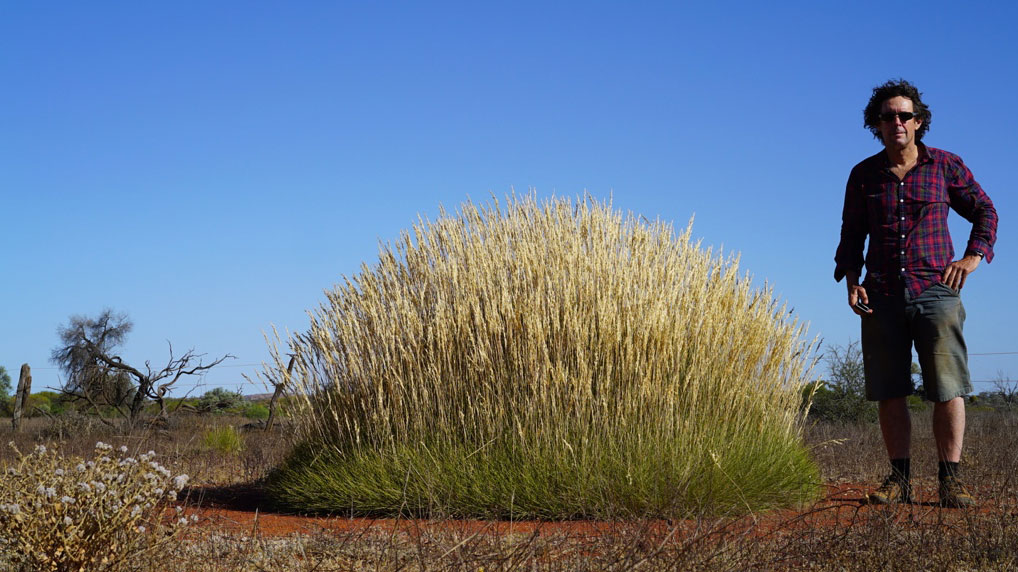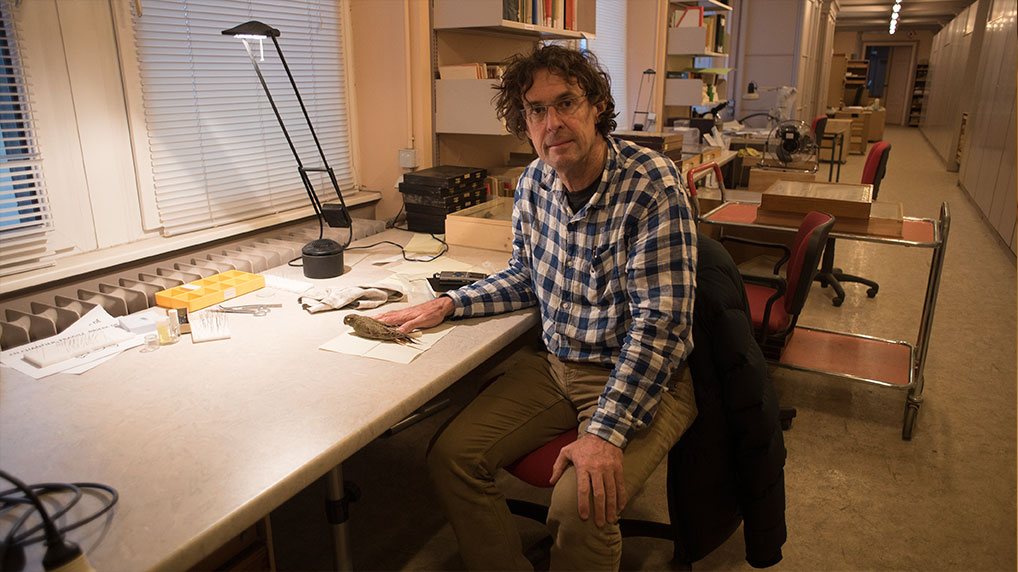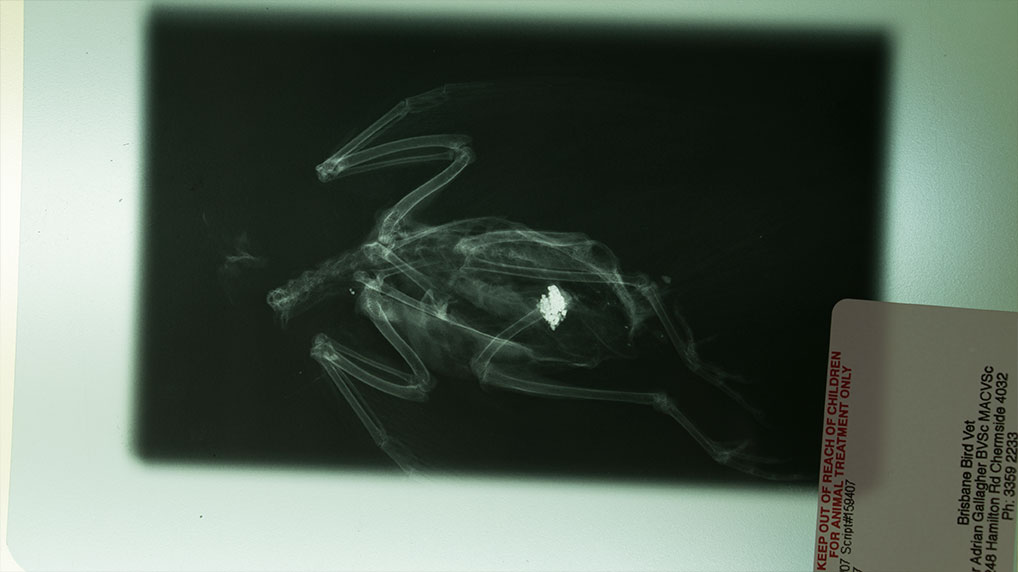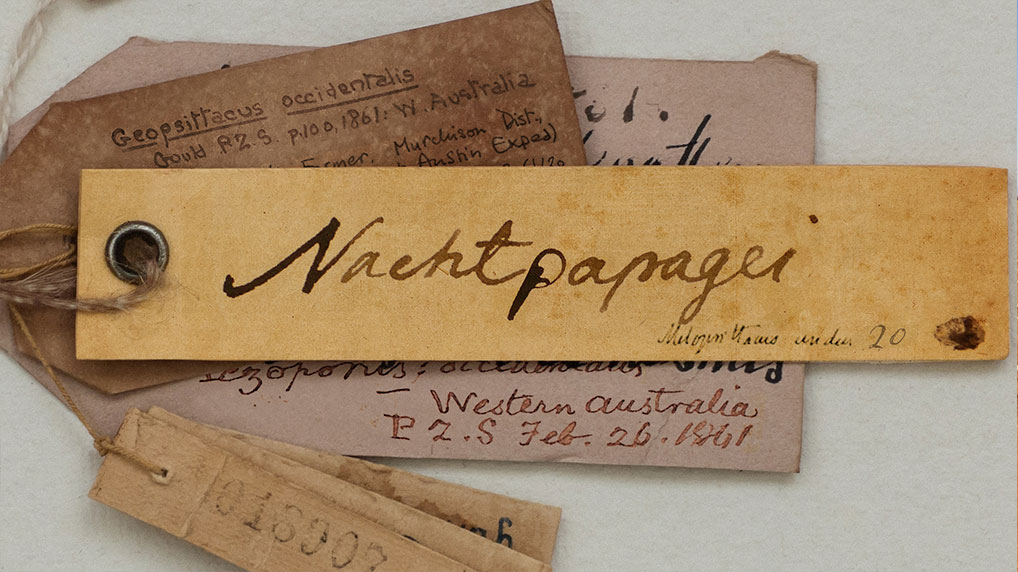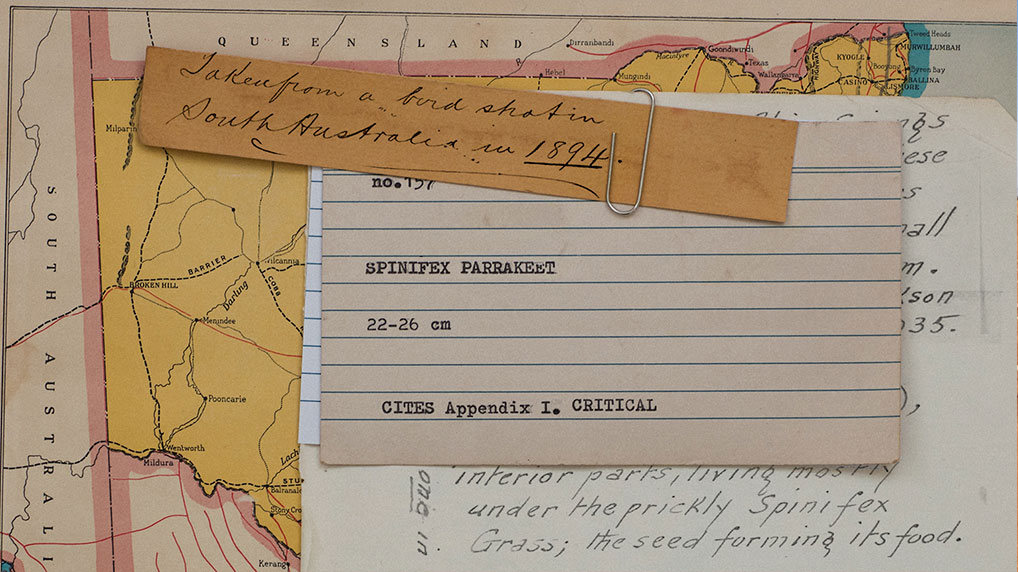
In the remote deserts of Australia lives an elusive nocturnal bird called the Night Parrot. Virtually nothing is known of its ecology. It disappeared at the end of the 19th Century. Searching for evidence of its existence became a preoccupation.
Filmmakers
Why a film on the Night parrot?
An ornithologist friend once gave me a book by Dal Stivens called “A Horse of Air”. It is the story of a supposedly fictional character, one Harry Craddock, who was obsessed with finding the Night Parrot. He relates his story of betrayal and jealousy to a psychiatrist in a mental institution - it is implied he has been driven mad by his search for the bird. Whenever you mention the Night Parrot to folk interested in birds, ecology and the history of Central Australia you will receive an immediate reaction and a personal story of their association with the bird. Perhaps not as mad as Harry Craddock’s but certainly there is a wide and varied interest in this creature. It has now achieved a mythical status (it is called a ‘grail bird’ by twitchers) and in the last 100 years the Night Parrot has inspired many unsuccessful ornithological adventures. The existence of the Night Parrot it would seem can not be proven unless you photograph it. The story of a trophy hunt, but this was not so interesting for me. In any case the bird is of cryptic habits and nocturnal…how to record a cinematic image? As a pastoralist in Central Australia laconically pointed out to me when I was researching the story -“it gets awful dark out here at nighttime”. Sightings occur when least expected and the encounter happens so fleetingly it may leave the observer doubting their senses. The Night Parrot can be heard calling in the night, but only if you know what to listen for. For these reasons in 2012 the Smithsonian Institute nominated the Night Parrot one of the world's most mysterious birds. I had initially thought I could use her character as a signifier for the accelerating environmental changes that are afoot, but searching for metaphors is a fool’s game.
Robert Nugent
ROBERT NUGENT
Director/Writer/Cinematographer
Rob is a Canberra based filmmaker whose enquiries often document situations where humans bump into the non-human world. His films employ and critique various documentary forms. His last three films came out of expeditions to remote locations in Indonesia, Guinea, Iraq, Ethiopia, Egypt, Tanzania and Australia. His 2007 film, 'End of the Rainbow', won international film awards and screened in Europe and the US. He directs and shoots, but not necessarily in that order. He likes chickens...in fact most birds. You can find out more about Rob here...
Producer's Statement
This is the third film I have produced with Rob Nugent. Each one has taken me into a world I knew nothing about and, to be honest had little interest in initially. The first one, End of the Rainbow, is a wonderful feature documentary that follows a gold mine as it is dismantled bolt by bolt, and shipped from Indonesian Borneo to Guinea West Africa. The film’s journey opens up a world of gold, greed, poverty and poetry. It is filled with insights into the beauty, tragedy and absurd moments of cultural exploitation. The film travelled to over 20 international festivals and picked up 8 international awards. A new voice in cinema was discovered.
The second film, Memoirs of a Plague, took us back into an internal exploration of Rob’s past life as a locust hunter. I never would have imagined that I would come to be interested in, and even care about, a locust. Rob used to exterminate them. Now he was singing an ode to their phase changing peculiarities and marvelling at their shift from solitary to swarm behaviours. Instead of killing with useless and damaging pesticides, his environmental plea was to recognise that locusts since pre-history come and they go. To honour nature and to acknowledge the contribution human’s have made to destroying it, we have paved the way for the plagues of pestilence – and this film is a plea to just let nature be.
And now Night Parrots – is this a mythical creature from Rob’s imagination? Will we find and see the parrot in the film, asks the commissioning editor? Well, no, not exactly, but maybe, it depends what you’re looking for. Rob’s films are always a search into an unknown world, that begin with me drifting from vague disinterest to irresistible curiosity. Where might this take us? What is the story or is it a meander through uncharted lands? We get lost and then we find unexpected treasures. Nothing is predictable in Rob’s films, the connections and observations are always absurd, unexpected, funny, tragic and overall magical. They always amount to more than the sum of their parts, a greater reality. Rob Nugent offers us a profound and unique vision and voice.
Mitzi Goldman
MITZI GOLDMAN
Producer, Looking Glass Pictures Pty Ltd
Mitzi has been making documentaries her entire working life. First an assistant editor, then writer, editor, director, producer – anything to do with framing up the real and weird world we inhabit, trying to make sense of it in all its wonderful madness. Endlessly curious and chronically taking on too much, alongside her small but beloved production company, she runs the Documentary Australia Foundation which enables filmmakers to access philanthropic funding to make social impact documentaries happen and make the world a better place.
Hilary Balmond
Editor
Hilary Balmond is a freelance Editor living in the Southern Highlands of NSW. From the tranqility of her edit suite and utilising the wonders of the internet, she cuts television shows, feature documentaries and community projects in collaboration with directors and other editors in the big smokes.
Most recently her editing credits include Move It Mob Stlye for ABC3 kids TV, A Common Purpose directed by Mitzi Goldman and winner of the Showtime Movie Channel Audience Award for No.1 documentary at the Sydney Film Festival June 2011 and Emergency Bikers for Channel 5 in the UK.
Prior to concentrating her career on editing, Hilary enjoyed many years making short films showcasing the work of community groups and performing arts practitioners. This stems from her work as Stage Manager of events and theatrical productions both in Australia and the UK. In her travels, Hilary was commissioned by London and Moscow based travel companies, to create promotional films for independent travellers wishing to explore the Scottish Highlands, Russia, Mongolia and China.
She has also been able to assist students at Sydney Church of England Girls’ Grammar School from concept to completion of their own short films. Hilary is very pleased to be working with Sprout Media By Kids again as she has seen first hand how empowering this type of film making can be for the kids involved.
Hilary has a wonderfully supportive and creative partner who is also a great cook, two amazing young daughters and she hopes to have some chickens soon too.
SAM PETTY
Sound Design
Sam is a sound designer who lives on the shores of the Pacific Ocean (unbelievably his studio is not in Sydney) where he produces aural sculptures for film connoisseurs and cinephiles all over planet Earth. Sam's studio is a wondrous place. In it he brought to bear his experience of many long years crafting sound for all sorts of film projects. Do listen up and enjoy a craftsman and artist at work. Sam's work can also be heard in the sound design for such films as Animal Kingdom (2010), The Rover (2014) and Lore (2012).
Parroternalia
Screenings
Digital Ethnographic research centre
Free Screening
4.00 PM 9th February 2017
canberra international film festival
6.00 pm 2nd November, 2016 ARC Cinema
Environmental Film Festival Australia, Melbourne
8.30 pm TuESDAY, October 4, 2016
Australian Centre for the Moving Image (ACMI)
Regent Cinema, Albury, 6.30 pm, 22 July 2016
sydney film festival, 1.30 pm, Sun. 19th June 2016
Something somewhere, Alice Springs
World premier, 5th May 2016
NATIONAL FILM AND SOUND ARCHIVE, CANBERRA
PREVIEW 19TH MARCH 2016
Reviews
“The film documents a quest to locate the rare nocturnal desert dwelling bird, and presents a range of ethnographic approaches, while raising questions with respect to our fragmented and incomplete natural history archive, engagement with indigenous communities, and the ethics and aesthetics of representing more-than-human environments”
Hunt for elusive night bird on screen at the National Film and Sound Archive in Canberra
A bird that's presumed to be extinct sparked a filmmaker's quest around the world
Canberra Times March 10 2016 - Cris kennedy
PARROTOLOGY
INTO EVERYONE’S LIFE A NIGHT PARROT COMES IN SOME FORM
I set out to make a film on the Night Parrot. It was 100 years since it had disappeared and many thought it extinct. In the course of filming the locations where the Night Parrot had been seen, the bird miraculously reappeared, making front page headlines around the world. Good news, but I thought its rediscovery spelt an end to my film project. The bird was not a winged Thylacene. It really existed and Science, funded by Capitalism, stepped in to take over its narrative - a large mining company paid the folk who found her to do secret research and I had no access to the story of her resurrection. I could not let her go at that, though surely the Night Parrot now had her dramatic ending. A beloved lost object had been found. But returned to whom?
The geography of the Night Parrot’s story I came to think of as a trick of time. There is a journey to and from the desert, and to and from places where knowledge is created, maintained, or lost, in so many different ways. During the film's production I read Dal Stivens’ “A Horse of Air”, which is a supposedly fictional account of a man driven mad by his search for the Night Parrot. The poetry of John Kinsella and Dorothy Porter, as well as Shakespeare’s “King Lear”, Eliot’s “The Wasteland” and Sean O’Brien’s translation of Dante’s “Inferno” came along for the ride. For music I listened to Chopin’s Nocturnes because they pay homage to the night. Chopin was a fellow insomniac.
All these things somehow made their way into the film. Even the static of current events, heard periodically when I passed through intermittent coverage, makes an appearance. So perhaps it is not surprising that my gaze becomes fraught. I found myself staring intently at a plaque marking a particular point in time and an obscure passing. What lay beneath these places and contemporary situations that the Night Parrot lead me to? I hope I have relayed aspects of the Night Parrot’s story that have been marginalised by the haste to lay claim, name and memorialise. By the end of filming, through 2013 and 2014, in all the mainland states of Australia and across Europe, I found that I could connect pretty much everything to that bird lost in the darkness.
So how to make the film ?
There is a fundamental question to ask before setting out to make a film…what is uniquely and particularly cinematic in this story that can only be told by a moving picture camera ? If you stay true to what can only be observed - as observers of bird behaviour do - and then impose a form on the images and the observers' behaviour, then you are on your way to making a film. In this case a cinematic essay. There are many fine examples of ethnographic films that fulfil the charter of being truly only reproducible by thinking visually through a video camera. I like the dogma and the infinite complexity of that idea. Using film also imposes the passage of time. Time is one of the protagonists in the story of the Night Parrot.
Aspects of a missing character can be portrayed by framing their absence with the places that once surrounded them and with those who may have an interest in the missing character. I read the work of the environmental philosopher Donna Haraway. She memorably said ”nothing comes without its world”. In her words I found an entreaty to seek out places where the Night Parrot once existed.… characters, situations, encounters. Through visiting these places I thought I could perhaps conjure the Night Parrot's existence in ways other than actually clapping eyes on it.
Presskit
Thank you for your interest in Night Parrot Stories. For more information please contact Rob using the form below, or delve into the Press Kit, or both.
Contact
Thank you for visiting the website.
For more information please contact Rob using the form below and he will be very happy to answer any question you may have.









